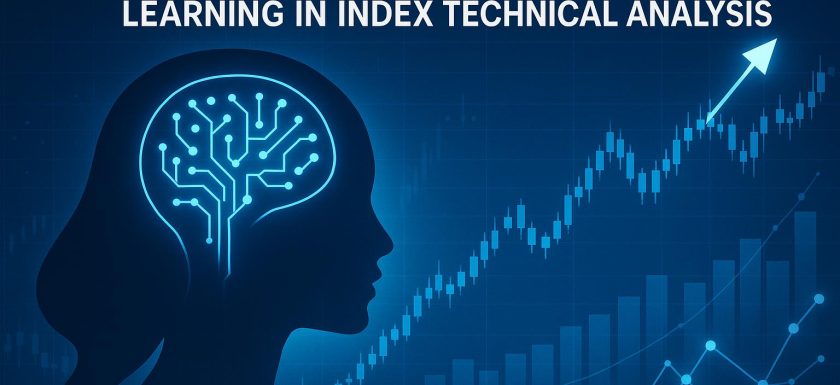
The Evolution of AI and Machine Learning in Index Technical Analysis
AI and machine learning (ML) have significantly transformed the landscape of financial analysis, particularly in the domain of index technical analysis. With ongoing advancements, these technologies are set to deepen their integration into financial markets, promising enhanced analytical capabilities, refined prediction accuracy, and a data-driven approach to decision-making.
Current Use of AI in Technical Analysis
In the realm of index technical analysis, the traditional reliance on human expertise and established mathematical models is undergoing a fundamental shift with the integration of AI and ML. This transition is driven by the superior ability of these technologies to handle complex data operations. A key aspect of this shift is the utilization of AI techniques like natural language processing (NLP), deep learning, and pattern recognition. These technologies are employed to efficiently process vast quantities of financial data and uncover trends or insights that might elude human analysts.
Financial institutions are increasingly relying on AI-driven algorithms to fortify their analysis of market indices. Such algorithms distinguish themselves by processing large datasets with improved speed and accuracy compared to conventional methods. They can discern intricate patterns within the data and generate predictions informed by historical trends. This capability allows analysts to preempt potential market movements and make more informed decisions.
Machine Learning Enhances Predictive Capabilities
Machine learning models stand out due to their capacity to evolve by learning from fresh data. This adaptive nature is pivotal in elevating the predictive capabilities of technical analysis. Models such as recurrent neural networks (RNNs) and long short-term memory (LSTM) networks are gaining traction in financial markets for time-series forecasting. These models excel at identifying temporal dependencies, a critical aspect when predicting market movements based on past data.
The adaptability and learning capabilities of these models mean that as they are exposed to more data, their predictions become increasingly accurate, offering a compelling edge in analyzing and forecasting index trends effectively.
The Role of Big Data
The impact of AI and ML in technical analysis is heavily amplified by the abundance of big data. By integrating an array of data sources—ranging from social media sentiment to economic indicators and real-time market news—the accuracy and dependability of index forecasts see a substantial rise. AI empowers analysts to incorporate unstructured data into their models, providing an enriched and multifaceted view of market dynamics.
The ability to tap into extensive big data resources not only enriches the models but also allows for a broader perspective on market behavior. This comprehensive view is crucial for making informed decisions that factor in the myriad influences and fluctuations inherent to financial markets.
Future Trends in AI-Driven Index Technical Analysis
Looking ahead, the role of AI and ML in index technical analysis is poised for further expansion and sophistication, with various emerging trends pointing towards more refined market analysis strategies.
One of the primary trends is the growing emphasis on enhanced interpretability of AI models. As these algorithms grow in complexity, ensuring they remain understandable to end-users is essential. This interpretability builds trust and empowers informed decision-making. Researchers are fervently exploring methods to establish more transparent AI systems.
Another significant trend is the development of personalized AI models. These models would offer customized analysis tailored to the unique needs and strategies of individual investors or financial institutions. Such personalization promises to deliver more accurate and pertinent insights, ultimately aiding in securing competitive advantages.
Lastly, the potential fusion of AI with blockchain technology stands to offer verifiable and tamper-proof analysis. This integration would add a deeper layer of credibility to AI-driven insights. As AI algorithms continue to advance, their assimilation into decentralized finance could unlock fresh opportunities for index technical analysis, potentially reshaping the foundational strategies and approaches within the field.
In conclusion, the convergence of AI and machine learning in index technical analysis is reshaping traditional methodologies. It brings forth improved predictive accuracy, comprehensive insights, and enhanced operational efficiency. As these technologies continue to evolve and gain adoption, they are poised to redefine the future landscape of financial markets, embedding a culture of technological innovation and data-driven expertise. The ongoing development and implementation of these cutting-edge technologies will undeniably influence the trajectories and methodologies of financial analysis in the years to come.
This article was last updated on: September 25, 2025
